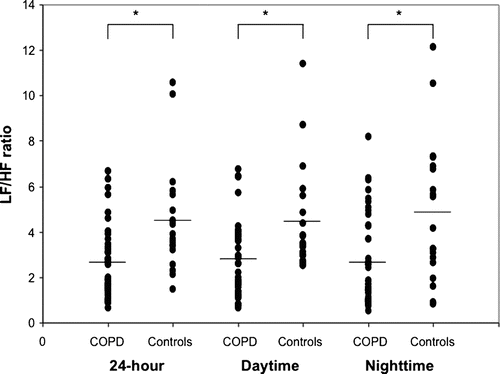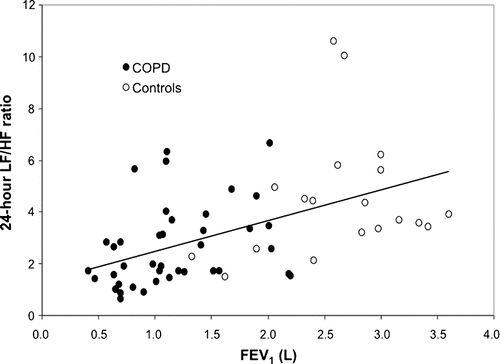Figures & data
Table 1. Characteristics of the study population
Table 2. Time and frequency domain analysis of heart rate variability in chronic obstructive pulmonary disease patients and controls
Table 3. Time-domain and frequency-domain analysis of heart rate variability in chronic obstructive pulmonary disease patients using or not ß-agonist and anticholinergic medications
Figure 1. Low/high frequency ratio of chronic obstructive pulmonary disease patients and healthy controls for the 24-hour, daytime and nighttime recording periods. The group mean is represented by the horizontal bar. LF/HF = Low/high frequency ratio; COPD = chronic obstructive pulmonary disease. *P < 0.005.

Figure 2. Correlation between the 24-hour low/high frequency ratio and lung function in chronic pulmonary obstructive disease patients and controls. Significant correlations between the 24-hour low/high frequency ratio (LF/HF) and the forced expiratory volume in 1 second (FEV1) were observed for chronic obstructive pulmonary disease (COPD) patients (r = 0.342; P = 0.028) as well as the overall study population (r = 0.499; P < 0.001), whereas no correlation was documented for the controls (r = 0.206; P = 0.397). L = liters.
